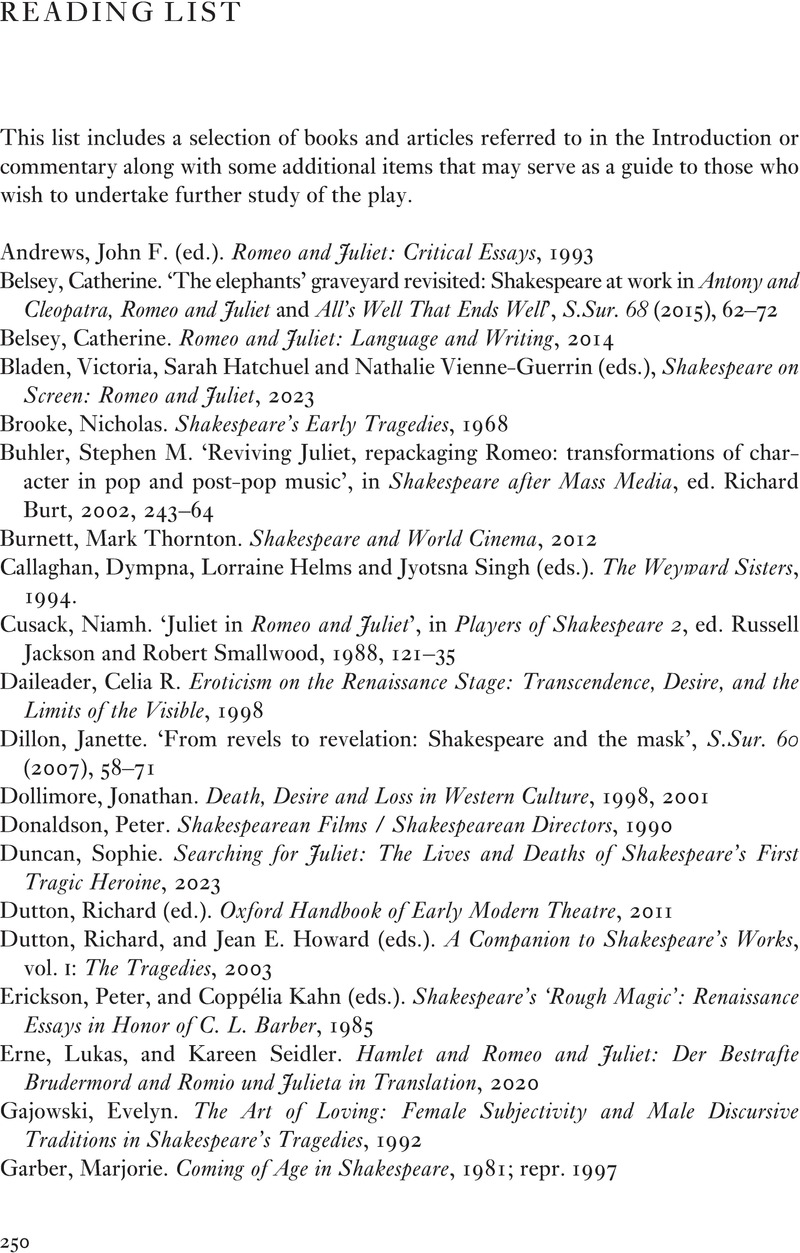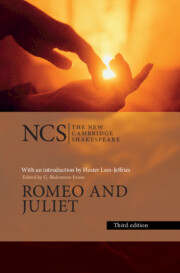Book contents
- The New Cambridge Shakespeare
- The New Cambridge Shakespeare
- Romeo and Juliet
- Copyright page
- Contents
- Illustrations
- Preface to the Third Edition
- Preface to the First Edition
- Abbreviations and Conventions
- Introduction
- Advice and Support
- Note on the Text
- Romeo and Juliet
- Supplementary Notes
- Note on Textual Analysis
- Textual Analysis
- Reading List
- References
Reading List
Published online by Cambridge University Press: 18 August 2023
- The New Cambridge Shakespeare
- The New Cambridge Shakespeare
- Romeo and Juliet
- Copyright page
- Contents
- Illustrations
- Preface to the Third Edition
- Preface to the First Edition
- Abbreviations and Conventions
- Introduction
- Advice and Support
- Note on the Text
- Romeo and Juliet
- Supplementary Notes
- Note on Textual Analysis
- Textual Analysis
- Reading List
- References
Summary

- Type
- Chapter
- Information
- Romeo and Juliet , pp. 250 - 252Publisher: Cambridge University PressPrint publication year: 2023



